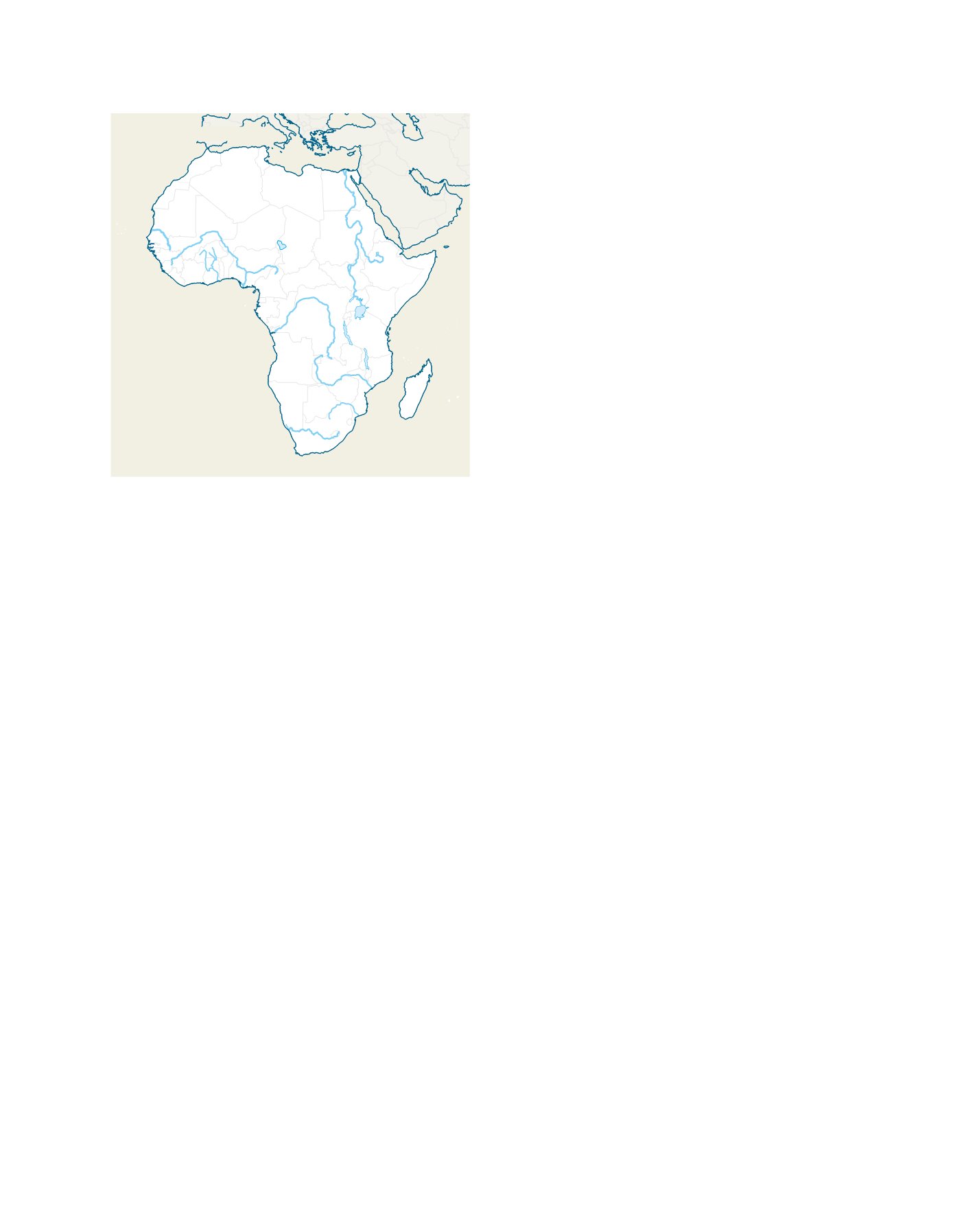

[
] 17
access
to
water
and
sanitation
for
all
Rapid urbanization and rising living standards will increase
demand for water, energy and food. Africa is the fastest urban-
izing region in the world. With increased urbanization will
come the added pressures of demand for clean and safe water.
Similarly, with climate change pressures and risks, there is
an increased tendency for countries to move towards a low
carbon development trajectory and green economies. These
could spell new opportunities in sectors such as industries
with the relevant infrastructural support. Africa’s continued
growth narrative is dependent on the ability of its economies
to gain access to and efficiently manage water as a key asset
in unleashing the job potential in sectors such as agriculture,
energy, tourism industry and ecosystem management. The
absence of insufficient and stable sources of water supplies
will not only produce dysfunctional food systems and render
erratic food supplies, it will considerably undermine Africa’s
ability to transition into green economy. Stable water supplies
can increase Africa’s capacity to generate hydropower elec-
tricity, which can increase revenue earnings for countries
where the resource can be tapped, although some would argue
that continually damming Africa’s rivers, with concomitant
reduced flows due to erratic rainfall, is the road to economic
catastrophe and ‘water wars.’
Small or large investments in the water sector –
action required at all levels
Studies indicate that proper use and application of Climate
Information Services (CIS) can improve the decision
making process of managing water resources and help to
build a climate change resilient economy, society and envi-
ronment as well as increase the predictive capacities of
farmers. The primary use of hydromet data is to support
reservoir and water project operations, water management,
and water supply forecasting for reservoir systems. Water
use supported by hydromet include flood control, irrigation,
power generation, water quality, water conservation, fish and
wildlife management, research and recreation. Observational
evidence demonstrates that many vital sources of water in
Africa, including lakes, rivers, and underground water
resources are under pressure due to climate change and
climate variability. Therefore, the significance and urgency
of upgrading hydromet services and climate-proofing our
water infrastructure has never been more glaringly evident.
The opportunity here is to increase financing, enhance
public-private partnerships, empower women who are
disproportionately burdened by the domestic water supply,
and target rural populations who are often the last served
in extreme events. The major challenges of the water supply
utilities under climate change include inadequacy of water
storage, inadequate and poorly maintained supply networks,
and vulnerability of the supply system to drought and
flooding. In many countries, investments to harness water
resources for development have tended to focus on built infra-
structure such as large dams for irrigation and hydropower
production. Yet, the question as to who truly benefits from
these investments, and who pays their costs remains conten-
tious. Investing in hydromet infrastructure, information
networks and data sharing could help in water-related risk
prevention and climate management strategies, such as early
warning systems, and ensure climate resilient development.
According to a recent report, infrastructure investment
commitments in Africa in 2015 totals US$83.4 billion,
compared to US$74.5 billion in 2014
3
. Climate-proofing
these substantial investments is essential as Africa stands
to be impacted the most from the adverse effects of climate
change even though the continent contributes less than 4 per
cent of global greenhouse gas emissions. This is particularly
so as most of the investments will support the construction
of long-lived infrastructure such as dams, power stations,
irrigation canals and transport corridors which may be
vulnerable to changes in climatic patterns. For example, the
water needed for hydropower generation or irrigation may
not be available in the amounts needed or at the right time;
roads may get washed away more frequently because of more
frequent high rainfall events.
The limited existing infrastructure in Africa is already
being severely impacted by extreme events associated with
climate change. For instance, as a result of the unusual El
Nino and La Nina events attributable to climate change
in recent years, hydropower production from the Kariba
Dam – which supplies most of the electricity consumed in
Zimbabwe and Zambia – almost ceased in early 2016 when
the volume of water in the reservoir dropped to about 12
per cent of capacity
4
. A 2015 study by the World Bank and
the Economic Commission for Africa on Enhancing the
Climate Resilience of Africa’s Infrastructure (ECRAI)
5
found
that failure to integrate climate change in the planning and
design of power and water infrastructure could entail, in the
driest climate scenarios, losses of hydropower revenues of
between 5 and 60 per cent, depending on the basin.
To this effect, the ECA, the World Bank, the African Union
Commission and the African Development Bank, with initial
support from the Nordic Development Fund, have set up the
Africa Climate Resilient Investment Facility (AFRI-RES).
AFRI–RES is an Africa-based networked centre of techni-
cal competence and excellence, whose overall objective is
Source:
https://lizardpoint.com/geography/africa-rivers-quiz.phpNile
Suez Canal
Blue Nile
White
Nile
Lake
Chad
Volta
Benue
Senegal
Niger
Lake Victoria
Lake Tanganyika
Lake Nyasa
Zambezi
Limpopo
Orange
Congo
Lake Albert
African rivers and lakes
















